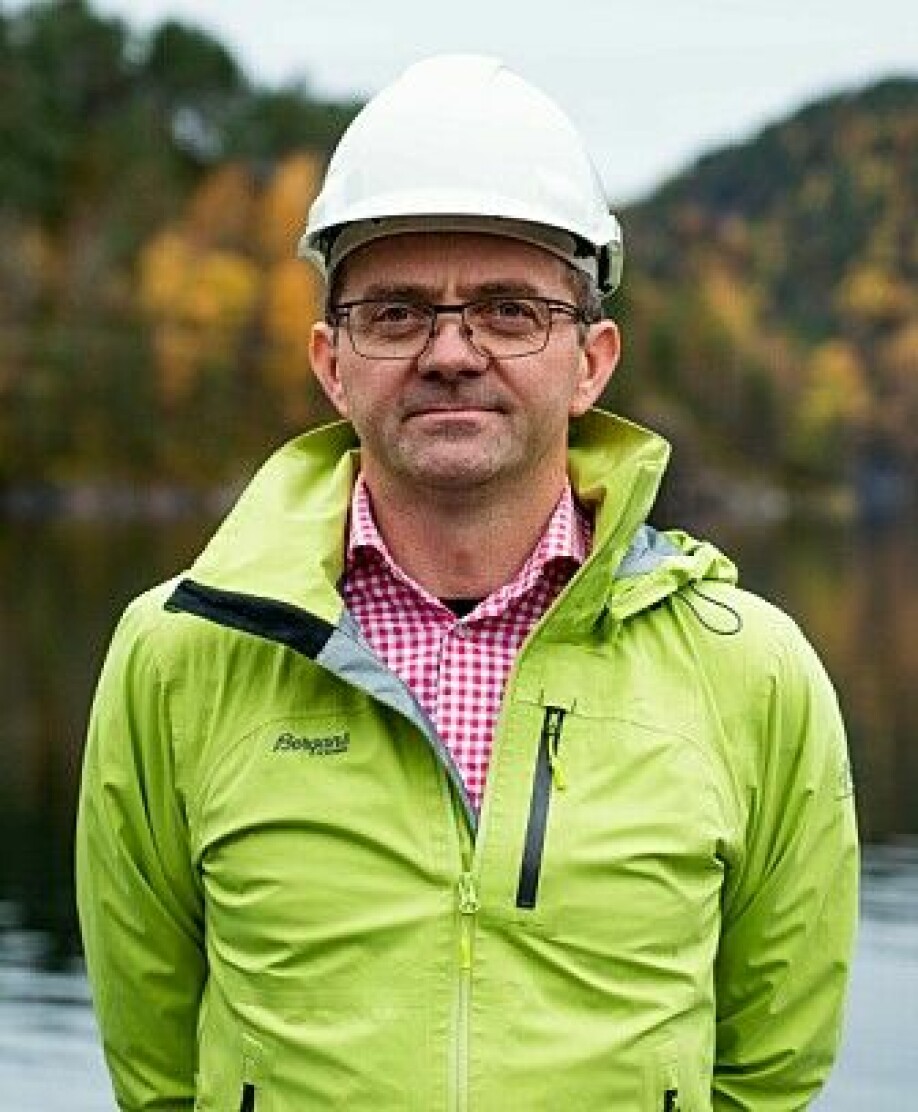
Electric fence against salmon lice
An electric fence keeps the salmon healthy. But we will never find a lasting solution to salmon lice, says one researcher.
Salmon lice float around in the sea like a floating snowstorm. Millions of larvae drift with the current until they find new salmon to attach to.
This is how Johan Fredrik Dahle describes the phenomenon of salmon lice. Dahle is the CEO of Harbor. The company from Stavanger has carried out a research project to stop the living snowstorm. The larvae move with the currents, but can be stopped with an electric current.
Stops attachment
“We work with low current and set up an electromagnetic field around the cage. This affects the salmon lice at the larval stage so that it is unable to attach itself to the salmon,” Dahle explains.
The electric fences in the water cannot kill fully developed salmon lice. The larvae, however, are so small that it is possible to influence them.
The fences not only prevent the larvae that come drifting into the cage from attaching to the salmon, but they also reduce the number of larvae that drift out of the cages. Therefore, they are also beneficial for wild salmon.
Leave the salmon alone
“The most important thing is that we leave the fish alone. There are many measures against salmon lice, but almost all of them are demanding in terms of animal welfare. They lead to high mortality and high costs,” Dahle says.
The electric fence on the outside of the farming cages is a preventive measure that does not disturb the farming and that leaves the fish alone.
Many methods
Researcher Frode Oppedal at the Institute of Marine Research says that there are many different preventive measures against salmon lice. Some of them are in full commercial use. Others are in the development or research stage.
“The main focus right now is to shield against salmon lice larvae. Many use skirts, closed cages under the sea and snorkel cages (a kind of skirt). Some immerse the cages are in deeper water, and some use a combination of preventive methods,” Oppedal says.
Lice skirts are a cloth, a physical barrier, that prevents lice from entering the farming cages.
"You can also boost the salmon's immune system so that it can withstand lice better and so that the lice cannot attach as easily. But this method is not as effective," Oppedal says.
Researchers are also breeding salmon to which lice do not attach easily, according to Oppedal.
“Some of the Pacific salmon do not get lice at all,” he emphasises.
No lasting solution

Oppedal talks about how feed that improves the immune system may reduce the infestation of lice by 10-15 per cent, while lowering the cages to deeper water removes up to 100 per cent. Lowering is still not a completely safe solution: The salmon lice larvae tend to stay in the upper layer of the water, but a storm can send them deeper.
“We will never find the lasting solution. What will work best will be a combination of solutions,” Oppedal says.
Johan Fredrik Dahle agrees.
“There will always be lice. We also see it where we fight bacteria, viruses, amoebas, or parasites: we can never eradicate them. What we need to do is keep them at a level where it is controllable,” Dahle says.
Counting lice now
Harbor’s electric fences are on the market now.
“We are now in this year's lice season and so far we have good results. But this is technology that will be strengthened continuously. Among other things, we aim to create a solution for remote operation,” he says.
The Norwegian company is looking for capital to invest internationally.
“Right now, we and our customers follow weekly developments and count lice. The measurements that are being made now will be important to show that the technology can be used on a larger scale,” Dahle says.
———
Translated by Alette Bjordal Gjellesvik.
Read the Norwegian version of this article on forskning.no
Reference:
Barrett et al. ‘Prevention not cure: a review of methods to avoid sea lice infestations in salmon aquaculture’ Reviews in Aquaculture, 2020, doi: 10.1111/raq.12456 Abstract
































